Mining
True or False / Verdad o Falso:
Natural gas is a form of renewable energy /
El gas natural es una forma de energía renovable
False! / Falso!
Natural gas must be extracted from the deep inside the earth where it was formed through longterm geologic processes.
El gas natural debe extraerse de las profundidades de la tierra donde se formó a través de procesos geológicos a largo plazo.
Define hydroelectricity
Definir hidroelectricidad
Using the natural movement of water to turn a turbine and generate electricity.
Usando el movimiento natural del agua para hacer girar una turbina y generar electricidad.
Define wind power.
Definir energía eólica.
Using the natural movement of air/wind to turn a turbine and generate electricity.
Usar el movimiento natural del aire/viento para hacer girar una turbina y generar electricidad.
Describe fossil fuel energy.
Describe energía de combustibles fósiles.
Burning fossilized carbon to boil water and generate steam, which will then turn a turbine and generate electricity.
Quema de carbono fosilizado para hervir agua y generar vapor, que luego hará girar una turbina y generará electricidad.
Describe nuclear power.
Describe energía nuclear.
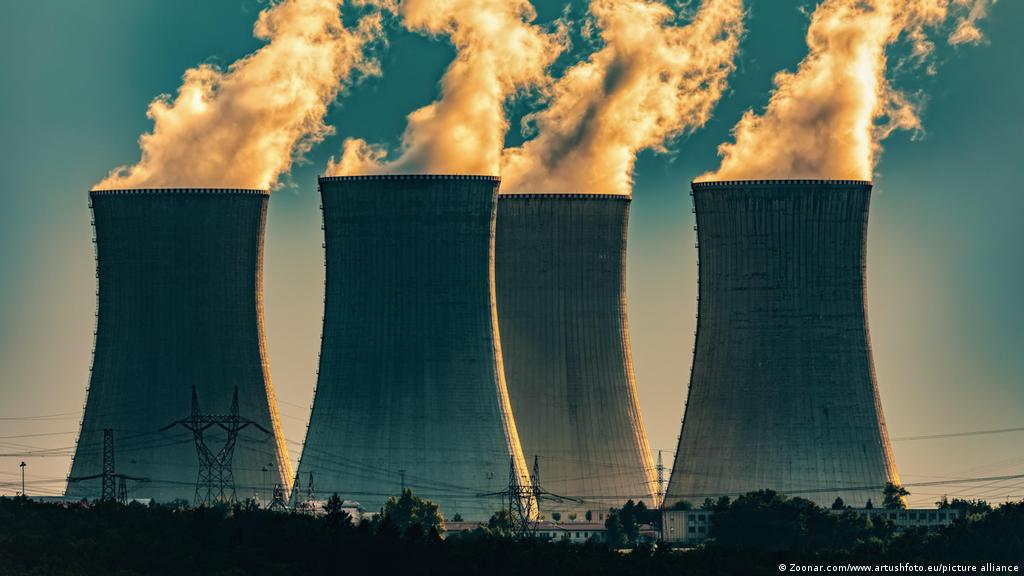
Using the heat from nuclear reactions to boil water and produce steam, which will then turn a turbine and generate electricity.
Usar el calor de las reacciones nucleares para hervir agua y producir vapor, que luego hará girar una turbina y generará electricidad.
Describe the definition of a non-renewable resource.
Describe la definición de un recurso no renovable.
A non-renewable resource is a resource that has a set amount available on the planet, and which will eventually run out. These include oil, coal, natural gas, and other fossil fuel resources.
Un recurso no renovable es un recurso que tiene una cantidad determinada disponible en el planeta y que eventualmente se agotará. Estos incluyen petróleo, carbón, gas natural y otros recursos de combustibles fósiles.
Describe one benefit of hydroelectricity.
Describa un beneficio de la hidroelectricidad.
- It does not produce emissions / No produce emisiones
- It is renewable (as long as we have consistent rain and water sources) / Es renovable (siempre y cuando tengamos lluvia y fuentes de agua constantes)
- It is relatively cost efficient / Es relativamente rentable
Describe one benefit of wind power.
Describa un beneficio de la energía eólica.
- It does not produce emissions / No produce emisiones
- It is renewable / Es renovable
- It is relatively cost efficient / Es relativamente rentable.
Describe one benefit of fossil fuel energy.
Describa un beneficio de la energía de combustibles fósiles.
- There is a lot of infrastructure already in place / Ya existe mucha infraestructura
- Relatively inexpensive / Relativamente barato
- Consistent (can be produced in many different conditions and locations) / Consistente (se puede producir en muchas condiciones y ubicaciones diferentes)
Describe geothermal energy.
Describe energía geotérmica.

Geothermal energy is using the heat within the earth's crust to boil water and produce steam, which turns a turbine and produces energy.
La energía geotérmica utiliza el calor dentro de la corteza terrestre para hervir agua y producir vapor, que hace girar una turbina y produce energía.
Describe the definition of a renewable resource
Describir la definición de un recurso renovable.
A renewable resource is a resource that can never run out and is free to collect, including sun, wind, and geothermal energy.
Un recurso renovable es un recurso que nunca puede agotarse y es gratuito para recolectar, incluidos el sol, el viento y la energía geotérmica.
Describe two downsides or challenges of hydroelectricity.
Describa dos desventajas o desafíos de la hidroelectricidad.
- Dams change the natural water pathways and affect river ecosystems / Las represas cambian las vías naturales del agua y afectan los ecosistemas fluviales
- Dams have a limited lifespan and can become dangerous as they age / Las represas tienen una vida útil limitada y pueden volverse peligrosas a medida que envejecen
- Dams are expensive to construct / Las represas son costosas de construir
- Concrete in dams produce emissions, and construction relies on fossil fuels. / El hormigón de las presas produce emisiones y la construcción se basa en combustibles fósiles.
Describe two disadvantages or challenges of wind power.
Describe dos desventajas o desafíos de la energía eólica.
- Wind power is not available in some locations. / La energía eólica no está disponible en algunos lugares.
- Many turbines are needed in order to provide all of the energy needs for a larger city. / Se necesitan muchas turbinas para satisfacer todas las necesidades energéticas de una ciudad más grande.
- Turbines can be expensive to construct. / Las turbinas pueden ser costosas de construir.
Describe two disadvantages or challenges of fossil fuel energy.
Describe dos desventajas o desafíos de la energía de combustibles fósiles.
- Fossil fuels produce emissions that contribute to air pollution and global climate change. / Los combustibles fósiles producen emisiones que contribuyen a la contaminación del aire y al cambio climático global.
- Mining for and extracting fossil fuels can be very disruptive to ecosystems. / La minería y la extracción de combustibles fósiles pueden ser muy perjudiciales para los ecosistemas.
- The waste from fossil fuels can contaminate the water system. / Los desechos de los combustibles fósiles pueden contaminar el sistema de agua.
Describe biomass energy.
Describir la energía de la biomasa.
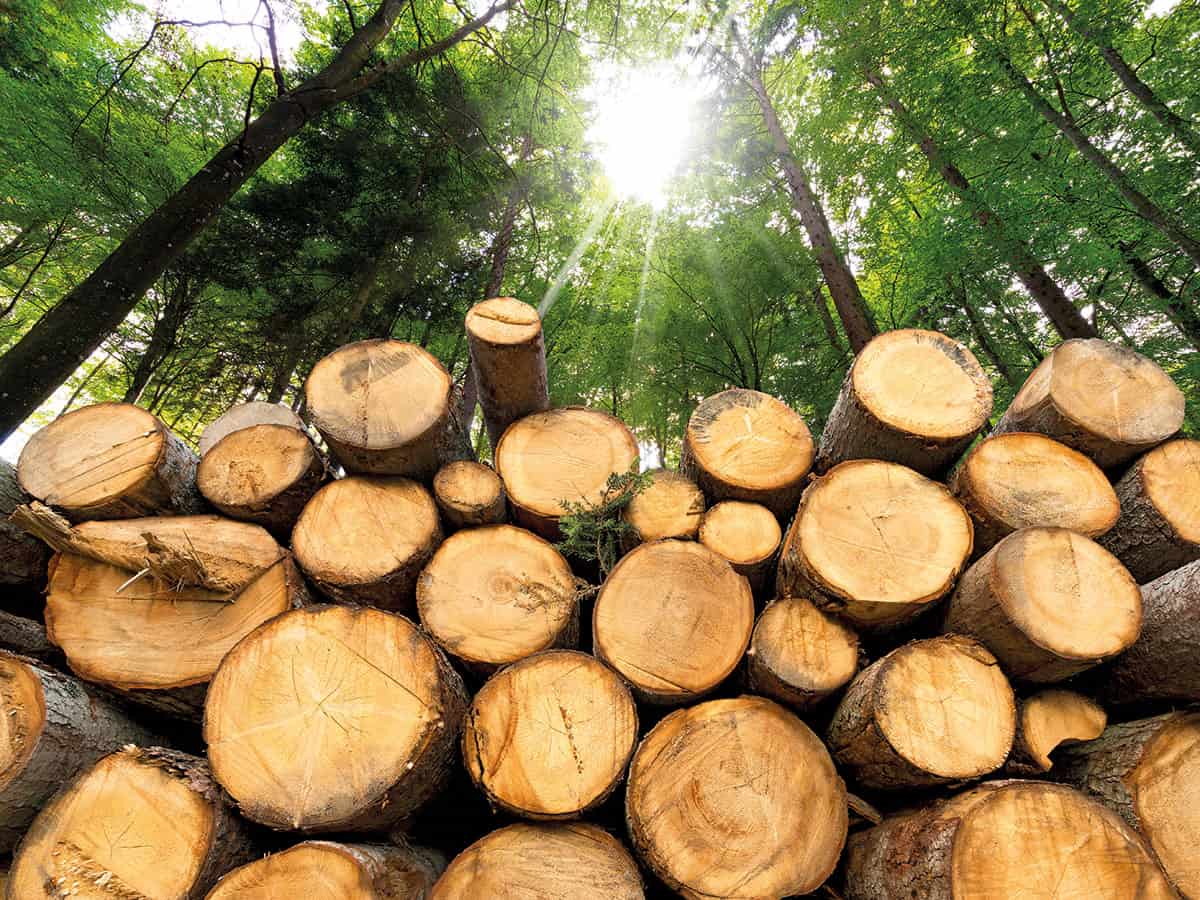
Burning plant material to boil water and generate steam, which will then turn a turbine and generate electricity.
Quemar material vegetal para hervir agua y generar vapor, que luego hará girar una turbina y generará electricidad.
Name three nonrenewable energy sources.
Nombre tres fuentes de energía no renovables.
- Oil / Aceite
- Coal / Carbón
- Natural gas / Gas natural
- Nuclear energy / Energía nuclear
What type of dam is this, and what is its advantage?
¿Qué tipo de presa es esta y cuál es su ventaja?

It is a buttress dam! It is strong, but does not require as much concrete as some other types.
¡Es una presa de contrafuerte! Es fuerte, pero no requiere tanto concreto como otros tipos.
What types of landscape are the best for wind energy, and why?
Options: mountains, valleys, plains, or hills.
//
¿Qué tipos de paisaje son los mejores para la energía eólica y por qué?
Opciones: montañas, valles, llanuras o colinas.
Large plains (and ocean coasts) are the best because there are fewer things to block or slow down the winds.
Las llanuras grandes (y las costas oceánicas) son las mejores porque hay menos cosas que bloqueen o frenen los vientos.
/cdn.vox-cdn.com/uploads/chorus_asset/file/10765069/Wind_Turbines.jpg)
What type of mine is pictured below, and how do you know?
¿Qué tipo de mina se muestra a continuación y cómo lo sabe?

This is a surface mine, because you can see how they have removed the top layers and dug a hole to get to the resource.
Esta es una mina a cielo abierto, porque se puede ver cómo han quitado las capas superiores y cavado un hoyo para llegar al recurso.

Describe the difference between reclamation and restoration.
Describe la diferencia entre recuperación y restauración.
Reclamation is when a company tries to create a useful space after mining an area. / La recuperación es cuando una empresa intenta crear un espacio útil después de minar un área.

Restoration is when a company tries to return the mined area to the previous status as closely as possible. / La restauración es cuando una empresa intenta devolver el área minada al estado anterior lo más cerca posible.

Name three renewable energy sources.
- Hydroelectric energy
- Wind energy
- Geothermal energy
- Solar energy
- Biomass
What type of dam is this, and what is its advantage?
¿Qué tipo de presa es esta y cuál es su ventaja?
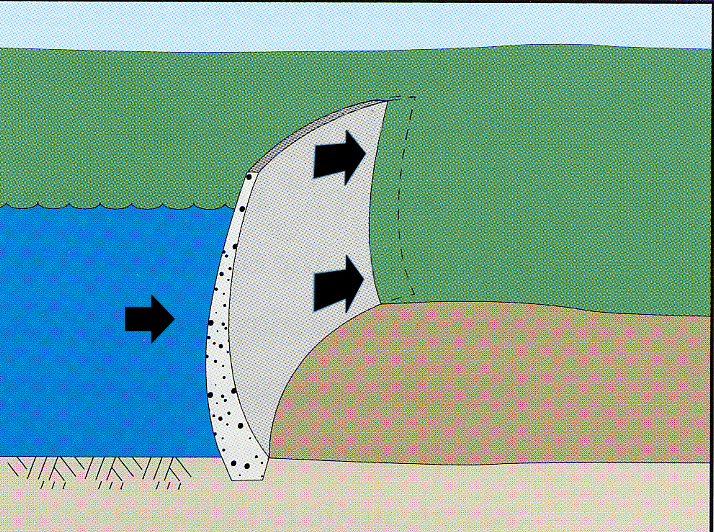
It is an arch dam! It uses less concrete than other types, and can fit into smaller river spaces.
¡Es una presa de arco! Utiliza menos hormigón que otros tipos y puede caber en espacios de río más pequeños.
Label the parts of a turbine below using the terms:
Tower, Blade, Foundation, Rotor hub, Nacelle
//
Etiquete las partes de una turbina a continuación usando los términos:
Torre, pala, cimentación, cubo del rotor, góndola
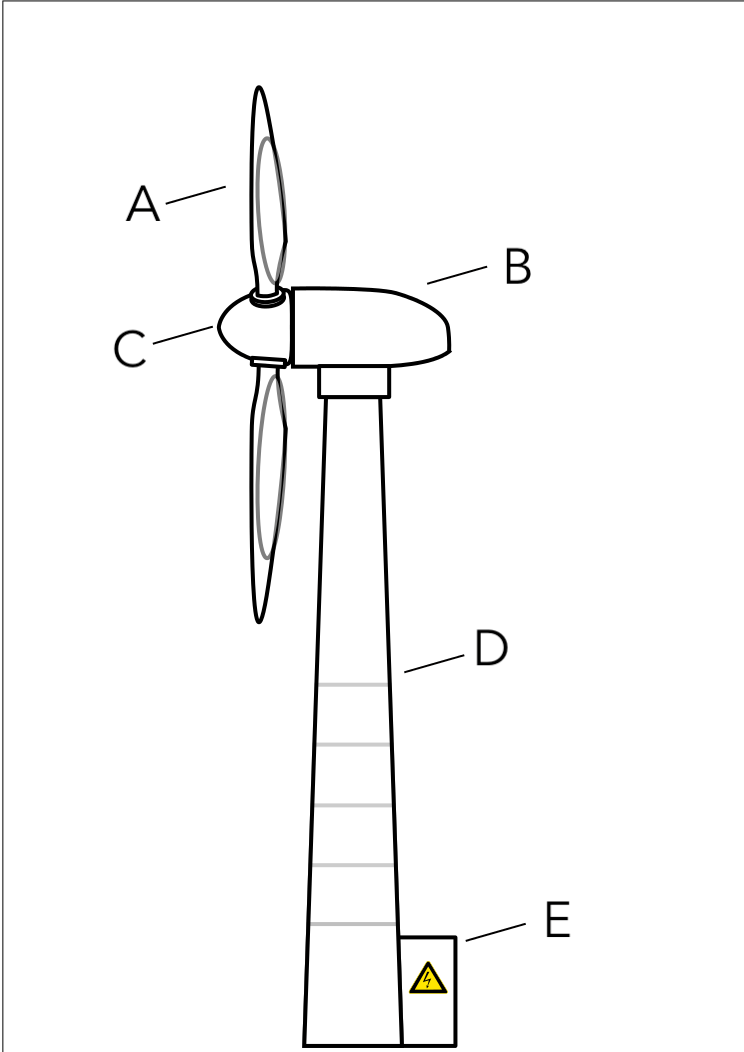
A - Blade / Pala
B - Nacelle / Góndola
C - Rotor hub / Cubo del rotor
D - Tower / Torre
E - Foundation / Cimentación

What type of mine is shown below, and what is one advantage and one disadvantage of this?
¿Qué tipo de mina se muestra a continuación y cuál es una ventaja y una desventaja de esto?
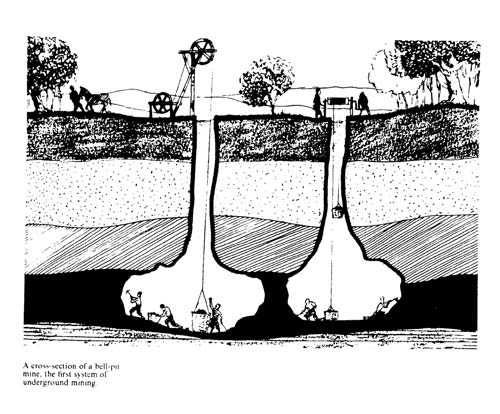
This is a shaft mine. An advantage is that it does not disrupt the soil structure, and a disadvantage is that it can be dangerous for workers.
Esta es una mina de pozo. Una ventaja es que no altera la estructura del suelo y una desventaja es que puede ser peligroso para los trabajadores.

Make a claim about what energy production strategies the USA should invest in for our future. In your claim, describe the pros and cons of our current system, and the pros and cons of your suggestions.
Haga una afirmación sobre en qué estrategias de producción de energía deberían invertir los EE. UU. para nuestro futuro. En su reclamo, describa las ventajas y desventajas de nuestro sistema actual y las ventajas y desventajas de sus sugerencias.
Answers vary! / ¡Las respuestas varían!
